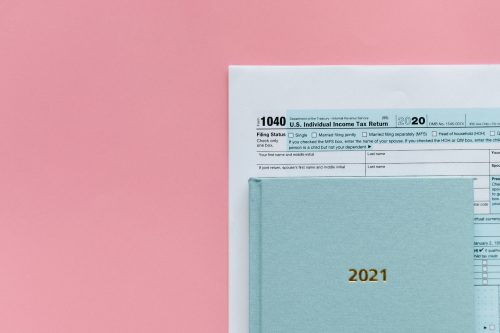- The United States employs a progressive income tax system, meaning your tax rate rises as your taxable income increases.
- Your tax bill reflects the income tax bracket you end up in for that tax year.
- Your tax deductions, credits and exemptions not only impact your taxable income, but they also determine which tax bracket you’re in.
Whether it’s tax season or you merely want to brush up on key tax considerations prior to filing, it’s important to understand how tax brackets work. You may end up in a higher or lower tax bracket compared to previous years, especially if you have experienced a change in income.
What are tax brackets?
A tax bracket is a set range of incomes subject to a corresponding income tax rate. The Internal Revenue Service (IRS) uses a progressive tax system based on a marginal tax rate, meaning the rate of tax you pay corresponds to how much taxable income you make per year.
How do taxes work?
The progressive tax system in the United States includes seven rate brackets that increase corresponding to the amount of income you have that’s subject to tax. Your income is divided among the different brackets until you reach the last bracket you qualify for. With all of your income taxed at the corresponding rates, the tally is then summed to determine your total taxes.
Marginal tax rate explained
The marginal rate accounts for the amount of tax you owe once you’ve gone beyond a certain financial threshold. Those with lower incomes pay the percentage associated with a lower tax bracket. As income increases, taxpayers pay a marginal rate depending on how much is left over. Different rates correspond with different amounts of income. The more income brackets you satisfy, the higher rate you’ll pay.
Effective tax rate explained
The effective tax rate is another method of calculating the total tax you’ll owe on your total income. This figure can be easier to tally at a glance than by calculating your marginal tax rate, which requires you to account for percentage increases up to the last dollar (thus requiring more work). If you have capital gains tax considerations, it can be helpful to know your effective tax rate to help prepare yourself financially come tax time. You’ll also need to know your total tax expenses to calculate your effective tax. Total tax expenses are the entire amount of money owed in tax, not just income tax.
| Effective Tax Rate Formula |
| Effective tax rate (for individuals) = Total tax expenses / Taxable income |
Federal income tax brackets and tax rates
Federal tax brackets are determined by income levels and your filing status. These filing statuses consist of married couples filing jointly, married couples filing separately, single filers and heads of household. Each filing status has its own dollar tier amounts for each of the different tax brackets, which is adjusted by the IRS every year. Married people filing jointly have broader income brackets, meaning they need more income to move up in tax brackets compared to single filers.
State tax brackets
State income tax brackets may be different from federal income tax brackets. Some states may not use brackets or have income taxes at all. The majority of states use a progressive tax system that may have only a few brackets or, in other cases, have 10 or more.
Colorado, Illinois, Indiana, Kentucky, Massachusetts, Michigan, North Carolina, Pennsylvania, and Utah have flat income taxes, meaning there are no tax brackets. Alaska, Florida, Nevada, South Dakota, Tennessee, Texas, and Wyoming have no state income tax.
What tax bracket am I in?
You can determine your individual income tax bracket in a number of ways. You can look at your previous year’s tax filing for an indication of what tax bracket you’re in based on the prior year, which can help you determine what your current bracket may be (barring any major income changes). You can also use tax software or consult a certified public accountant (CPA) to get more information or to help you make other tax-related financial decisions.
Calculating taxable income
You can calculate your taxable income by subtracting your applicable tax credits (including the child tax credit and others), tax deductions and exemptions from your earned income. If you do not plan to itemize your deductions, you can use the standard deduction as a baseline figure to help you calculate taxable income.
Why understanding tax brackets matters
Knowing what tax bracket you fall into can help you financially prepare for the tax season. Forecasting the bracket you’re in can help you determine how much you may need to have on hand if you owe taxes at the end of the year.
Being aware of your tax bracket and taxable income each year can also help you develop a thoughtful, proactive approach to saving for retirement; several types of retirement accounts allow you to make pre-tax contributions, thus lowering your current taxable income in the process. A financial advisor can walk you through your options so that you’re prepared for tax season, while staying on track with your financial goals.










